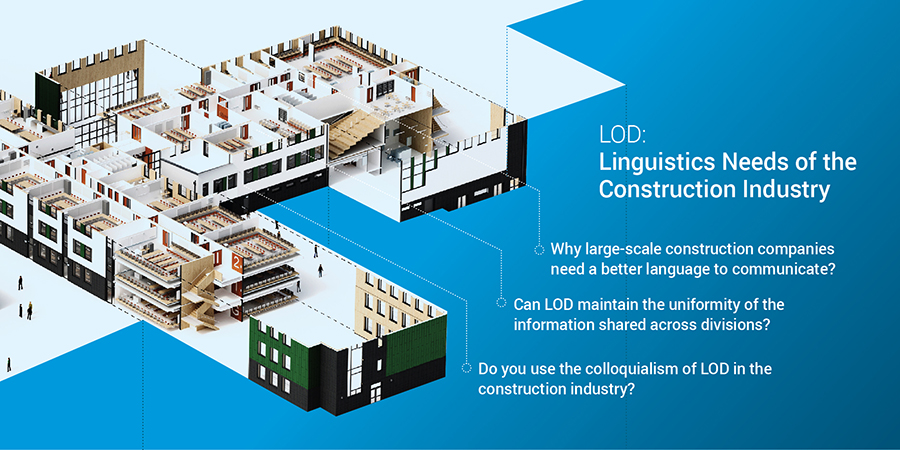LOD: Linguistics Needs of the Construction Industry
See also: Level of detail.
In the era of digital designing and building information modelling (BIM) construction industry professionals, work in 3D. But this can means we are more exposed to risks and challenges, even while designing. When a design consultant hands off the model to someone else, let’s assume - a contractor or a structural engineer, they might have a different understanding of what is done and what is going to be a challenge during construction.
Large-scale construction companies face challenges in communicating designs, obstacles, intents, and the gravity of a piece of information and so on across the divisions. They have a difficulty getting their documents to flow between their partner organisations, vendors, offshore workers, and others working remotely to propagate information that is uniform. Hence the construction industry needs a better language to communicate more than just 3D modeling and BIM platforms - something that we commonly refer to as Level of Development (LOD).
The major concern working with a 3D BIM model is trust. Precision - accuracy and 3D parametric modeling have a history of not going hand in hand. The structural engineer could have modeled the column with significant decimal precisions and yet, on-site, the reality is completely different. The same column could be lying some distance away from the position in the model. This is because the modeling environment is never synchoronised with reality.
LOD resolves this by introducing the designer and the evaluator of any 3D BIM model to uniformity of the information being passed on. It gives the information about the digital maturity of each element and is a trigger mechanism which starts the designer’s work only when the critical components reach a certain desired level of maturity.
LOD standards were established by AIA in 2008, from LOD 100 to LOD 500 to define the gravity of design detailing in the BIM model for each component. Additionally, the BIM forum also contributed to interpreting those levels for building products manufacturers and fabricators, in particular; plumbing, electrical, foundation, roofs etc. to collaborate better.
There are six explicit levels of development:
- LOD 100 - Elements are a generic representation, giving the viewer a basic idea of existence but no idea about size, exact shape or orientation.
- LOD 200 - A representation of a rough idea of elements’ size, location in the facility etc. but with much approximation.
- LOD 300 - This shows the specific geometric size of the element and orientation, location, and quantity used across the facility.
- LOD 350 - A revision of LOD 300 depicting precise information about how the component will be connected to the nearby elements. This is usually the minimum requirement of construction firms.
- LOD 400 - Sufficient information to fabricate the component with individual holes and weld sizes.
- LOD 500 - The fully-developed design, showing the operational geometry of the component, the stage of installation of the component with duly verified information such as manufacturer details, dates, part, and model number etc.
The biggest advantage of LOD is it communicates the design details on its own. This means phone calls and emails are avoided saving significant time. It also means, there are no conversation gaps and a standard is maintained in transmitting information from designer to contractor, from contractor to manufacturer, from manufacturer to the installer and so on across the value chain to the facility management teams.
Related articles on Designing Buildings Wiki
- American Institute of Architects AIA.
- BIM.
- BIM articles.
- BIM dimensions.
- BIM glossary of terms.
- BIM maturity levels.
- BIM Task Group.
- Construction Operations Building Information Exchange (COBie).
- CIC BIM Protocol.
- Data drops.
- Employers information requirements.
- Federated building information model.
- Information manager.
- Level of detail.
- Level of Development LOD.
- PAS 1192-2:2013.
- Plain language questions.
BIM Directory
[edit] Building Information Modelling (BIM)
[edit] Information Requirements
Employer's Information Requirements (EIR)
Organisational Information Requirements (OIR)
Asset Information Requirements (AIR)
[edit] Information Models
Project Information Model (PIM)
[edit] Collaborative Practices
Industry Foundation Classes (IFC)







Comments